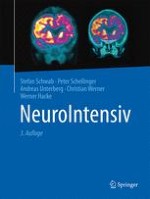2015 | OriginalPaper | Buchkapitel
29. Blutungen
verfasst von : Berk Orakcioglu, Dr., PD Dr. Dimitre Staykov, Andreas Unterberg, Prof. Dr., Oliver Sakowitz, Prof. Dr., Martin Bendszus, Prof. Dr., Prof. Dr. Hans Herbert Steiner, Daniel Haux, Dr., Stefan Hähnel, Prof. Dr.
Erschienen in: NeuroIntensiv
Verlag: Springer Berlin Heidelberg











